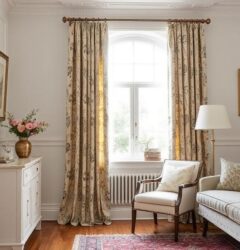Honeycomb blinds, also known as cellular blinds or cellular shades, are a popular type of window covering. They are designed with a unique structure that resembles the shape of honeycomb cells, hence the name.
Honeycomb blinds consist of a series of interconnected fabric cells that create air pockets. These air pockets provide insulation, making them effective at regulating temperature and improving energy efficiency. The trapped air helps to keep rooms cool in the summer and warm in the winter by reducing heat transfer through windows.
The construction of honeycomb blinds also contributes to their light-filtering and privacy capabilities. They are available in various opacities, ranging from sheer to blackout, allowing you to control the amount of light entering a room. The fabric used in honeycomb blinds is often light-filtering, meaning it diffuses light while still providing privacy. However, you can also find options with blackout fabric that blocks out all light.
Honeycomb blinds come in a variety of colors, patterns, and sizes to match different interior styles. They can be operated manually with cords or through a cordless system, which offers a safer and more streamlined appearance. Some models even have motorized options, allowing you to control them with a remote or through home automation systems.
In summary, honeycomb blinds are versatile window coverings that provide insulation, light control, and privacy. They are an excellent choice for energy-efficient homes and can enhance the aesthetics of any room.







